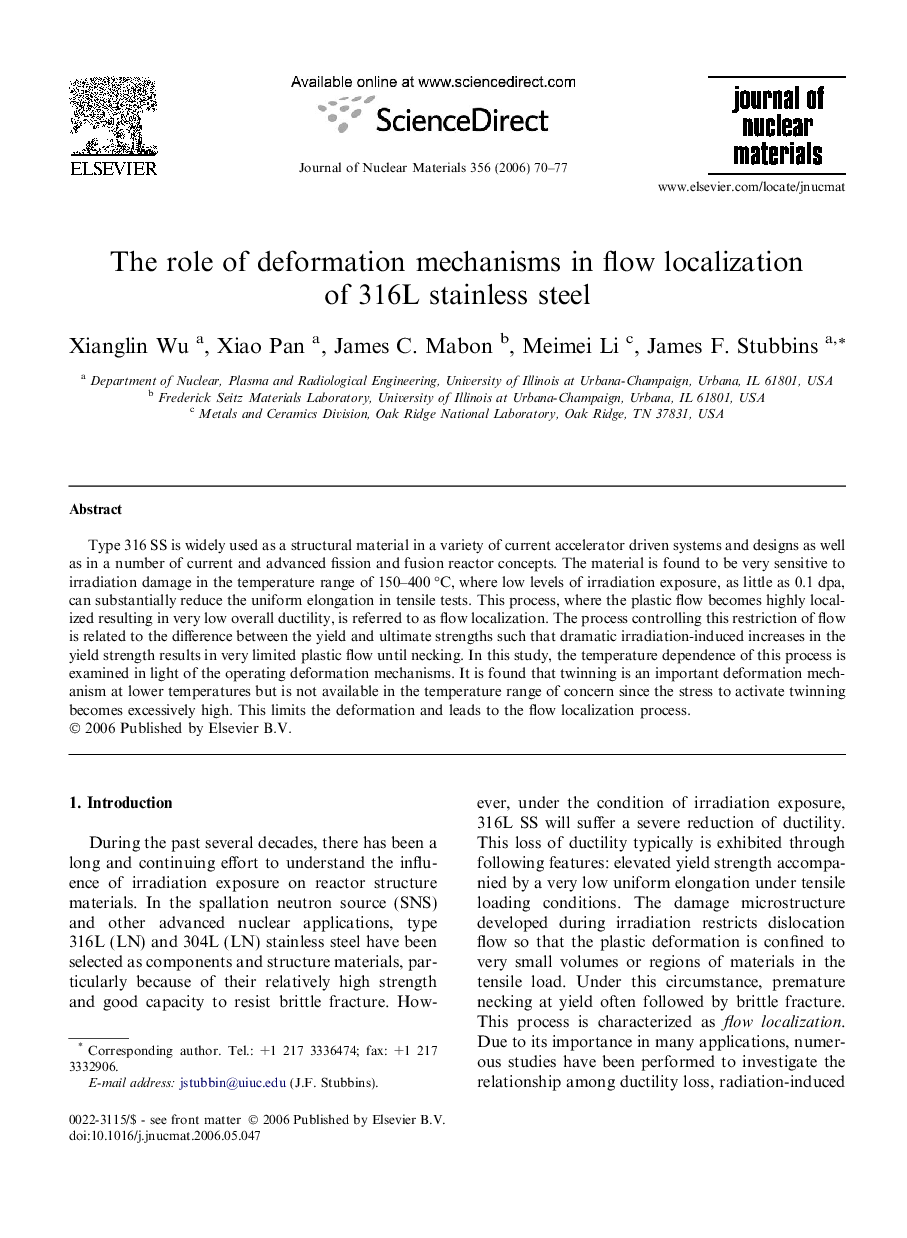| Article ID | Journal | Published Year | Pages | File Type |
|---|---|---|---|---|
| 1569781 | Journal of Nuclear Materials | 2006 | 8 Pages |
Type 316 SS is widely used as a structural material in a variety of current accelerator driven systems and designs as well as in a number of current and advanced fission and fusion reactor concepts. The material is found to be very sensitive to irradiation damage in the temperature range of 150–400 °C, where low levels of irradiation exposure, as little as 0.1 dpa, can substantially reduce the uniform elongation in tensile tests. This process, where the plastic flow becomes highly localized resulting in very low overall ductility, is referred to as flow localization. The process controlling this restriction of flow is related to the difference between the yield and ultimate strengths such that dramatic irradiation-induced increases in the yield strength results in very limited plastic flow until necking. In this study, the temperature dependence of this process is examined in light of the operating deformation mechanisms. It is found that twinning is an important deformation mechanism at lower temperatures but is not available in the temperature range of concern since the stress to activate twinning becomes excessively high. This limits the deformation and leads to the flow localization process.
